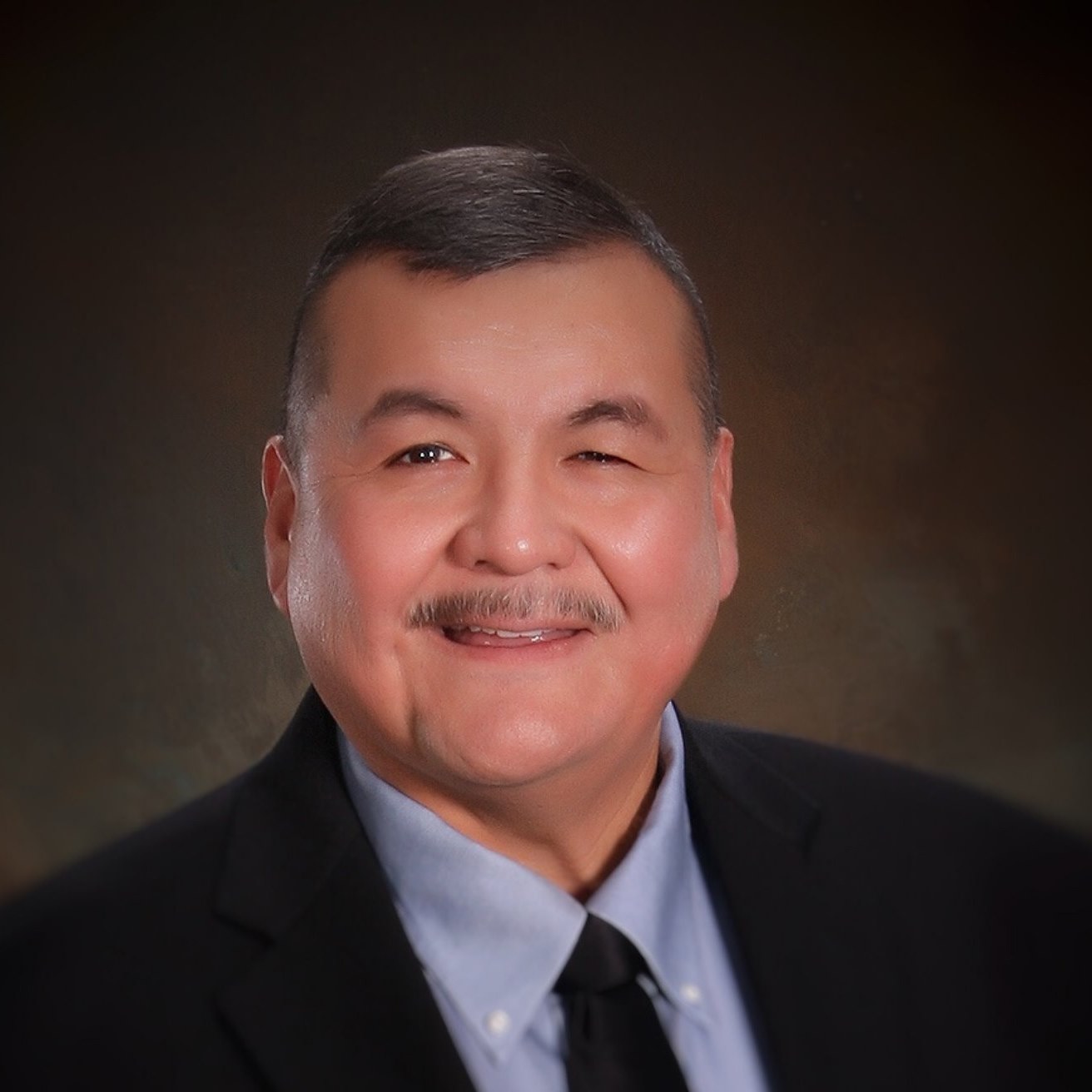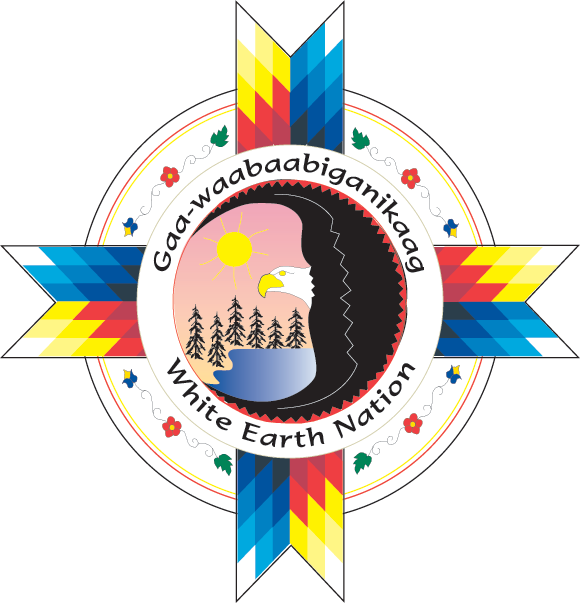
Michael Fairbanks
As your Chairman, Mike serves all White Earth Reservation members on and off the reservation. Please stay tuned for further updates from your Chairman!
December 2025 Chairman's Report
Aaniin Boozhoo Gaa-waabaabiganikaag
Niminwendam Waabaminaan!
Manidoo-Giizisoons!
Gii-wiisiniiminaanan gikinoo’amaagewinan
manidoo-waadiziiwinan gaa-minwendamaang ezhi-aandizooke.
Aaniish inaa akawe ninga-gaagiizomaag aadi-zookaanag.
Weweni-sago-na
Greetings White Earth Nation I am Happy to See
You!
It is already December- Little Moon!
We feasted the spirits- it is the beginning of storytelling season. Mother Earth is blanketed by goon, snow.
Everyone Be Safe.
In the deep quiet of Manidoo Giizisoons, December, when the snow settles like a blanket
across the old paths, our elders say when Mama Aki Mother Earth gets blanketed by goon-snow and everything slows down we have a feast for the Adizookaan so we can ask permission to begin
telling Nanaboozhoo and Creation stories.
“Biboon ogii-ani-naanaagadawendam”
—
“Winter teaches us to reflect.”
Long ago, there was a teenager named Waaseya, whose heart felt heavy from the mistakes and hard-ships of the passing year. As the Manidoo-Giizisoons our final moon of the year and biboon, winter approached, Waaseya walked into the forest, searching for a way to let go of everything that had built up and to seek guidance for a healthier year to come.
The forest was silent except for the soft groan of the trees. Waaseya sat beneath a tall pine with closed eyes. After a long stillness, a gentle voice in the wind:
“Do not carry yesterday’s burdens into today.”
Waaseya looked around, but there was no one there only the old Zhingwaak Pine tree standing
boldly above. Its branches shook softly, releasing small showers of goon, snow. In that moment,
Waaseya understood the Zhingwaak was giving a teaching.
Just as the Zhingwaak the pine sheds its old needles to make room for new growth, so too must we release what no longer serves us.
“Maajitaa gidaa-izhichigeyan”—“Begin your new actions.”
Waaseya took a deep breath and spoke aloud the things they wished to let go—fear, anger, regret, pain of bullies and the sorrow which accumulated. With each word, the cold air carried the weight away. When Waaseya finally stood up and hollered the last of it loudly OUT with a heart feeling free now, as though biboon winter noodin, wind had nabbed it and swept it away clean.
As Waaseya walked home beneath the moon-
light, Waaseya heard one last whisper from the for-
est:
“Omaa giga-zaaga’igoyaan”—“Here, you are loved.”
Waaseya shed a happy tear leaving back to the village. When arriving Waaseya shared what had
happened and learned - that ManidooGiizisoons December is not just an ending, but a sacred pause. It is the moment between breaths when we choose what we will carry forward, and what we will leave behind.
And so for the coming year, we remember:
“Gii-izhaadaa mino-bimaadiziwin 2026”—“Let us walk toward a good life in 2026.”
The story teaches us that renewal is not a single moment, but a choice made again and again. Just like Zhingwaak giikinoo’amaage the teaching pine tree, always releasing what holds it back, always growing, always reaching for the light pushing forward.
Here’s an update from our White Earth Nation’s
Workforce/Human Resource Divisions.
For the past six months, the White Earth Reservation Human Resource Department directors
and assistant directors have met monthly to collaborate, strategize, share resources, and to engage new ideas to enhance the overall employment experience.
This monthly collaboration and goal setting ensures that we are maintaining fairness and consistency, streamlining policy and procedures, enhancing employee benefits, and increase efficiencies in our internal processes.
One goal was to analyze the employment data set from each entity separately and collectively. The
demographic data allows us to see where we can increase employee satisfaction, increase growth and training opportunities and remain competitive with wages in northern and greater Minnesota.
The data is being shared so our people can see that we focus on Native Preference in hiring. It also
shows our age demographics and our years of service. Keep in mind that the WERBC has been open for over 50 years, while other entities have opened at different times with Waabigwan within the past few years.
We are proud that our employees are the ones who truly make the difference. From each individual
employee’s contribution, the White Earth Nation continues to be successful and progressive. We strive to promote and focus on sustainability efforts that our 7 generations will benefit from. This level of commitment ensures the best possible service and care is delivered and provided for all people our White Earth Nation serves.
Our overall workforce can be summarized as
follows:
Total Employees: 2,145
Enrolled Members: 977 (45.55%)
Descendants: 264 (12.31%)
MCT (Minnesota Chippewa Tribe): 71 (3.31%)
Other Native American Tribes: 167 (7.79%)
Non-Native: 666 (31.05%)
The largest employers are the White Earth Reservation Business Committee (WERBC): 1,213 employees and Shooting Star Casinos (SSC): 647 employees.
The Leadership Workforce summary yields 214 positions (included in totals above)
Enrolled Members: 106 (49.53%)
Descendants: 28 (13.08%)
MCT: 4 (1.87%)
Other Native American Tribes: 16 (7.48%)
Non-Native: 60 (28.04%)
Key Takeaways:
- Nearly half of all employees are enrolled White
Earth Members. - Native Workforce overall (all categories com-
bined): - 69%. - Leadership roles have a slightly higher
enrolled-member representation (49.53%) compared
to the general workforce (45.55%). - We have a workforce made up primarily of
combined ages between 20-50 years of age at
(80.9%). - 23.2% of our workforce has at least 10 years of
service with (57%) of our workforce with 0-5 years
of service.
Key Insights:
- White Earth Nation has successfully maintained a strong tribal workforce.
- Representation from other tribes is healthy and contributes to diversity.
- We have an overall diverse employee population who possess a depth of skill and work experiences, education and backgrounds that promote the overall visions and goals of each individual tribal entity.
- Nearly 70% of employees are Native American (all categories combined) which is significantly
above state and national averages. - We are proud of all of our employees’ contributions that help us all live mino-bimaadiziwin (The
Good Life).
As we wrap up the year, I want to take a moment to thank everyone across our Gaawaabaabiganikaag Ishkoning, White Earth Tribal Nation for the hard work, patience, and steady commitment that carried us through 2025.
This has been a year of actually the greatest real progress—strengthening our programs, supporting our families, and taking important steps to protect our language, our homelands, and the well-being of our people. None of this happened on its own; it came from our tribal Elders, Membership, Council, staff, and our community leaders who showed up day after day with good hearts and a clear purpose.
I’m grateful for all we’ve accomplished together and hopeful for the path ahead. Gichi-Miigwech for your trust, your support, and your continued dedication to our Gaawaabaabiganikaag Ishkoning, White Earth Nation.
Chi-miigwech bizindawiyeg miinawaa anooj
ninda-gikinoo’amaadiwin
Baamaapii wiingezin.
Miigwech bizindawiyeg.
Gigawaabamininim naagaj.
Thank you for listening and continuing to learn
together
Take it easy.
See you all later.
Chairman Michael Fairbanks
